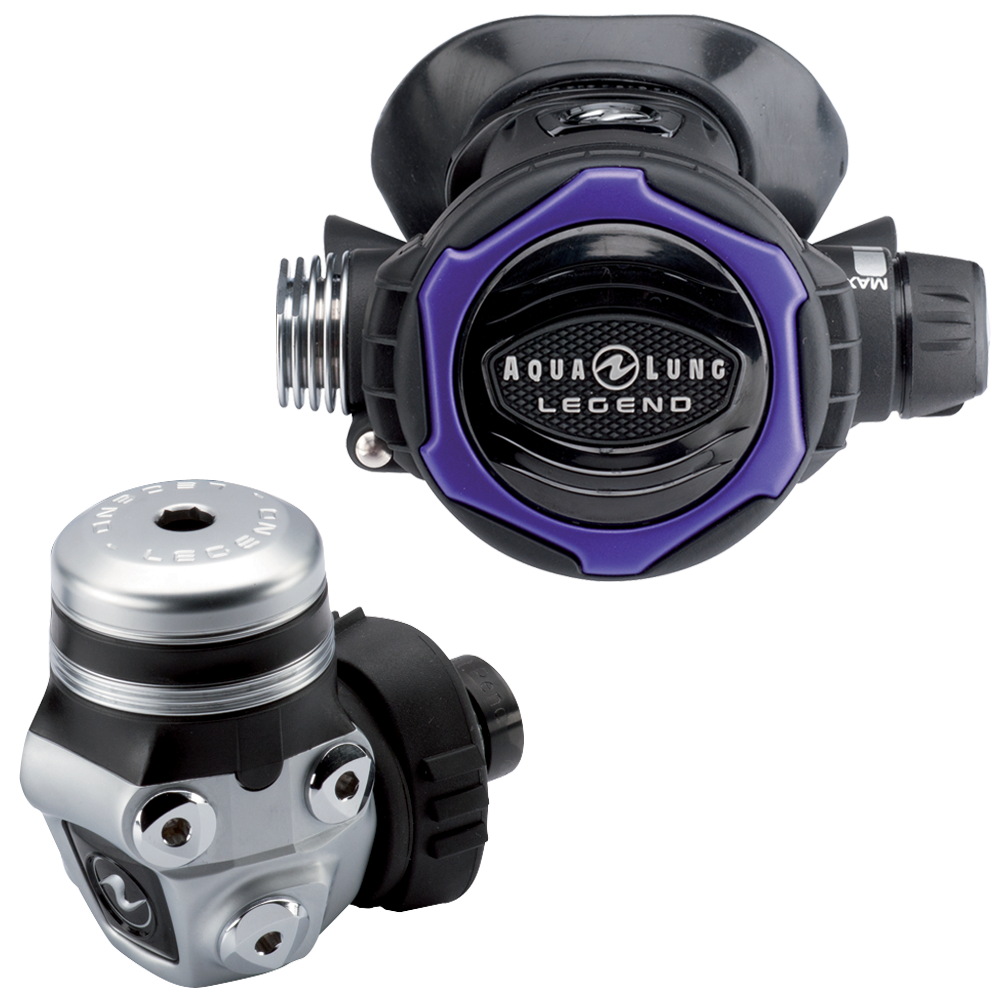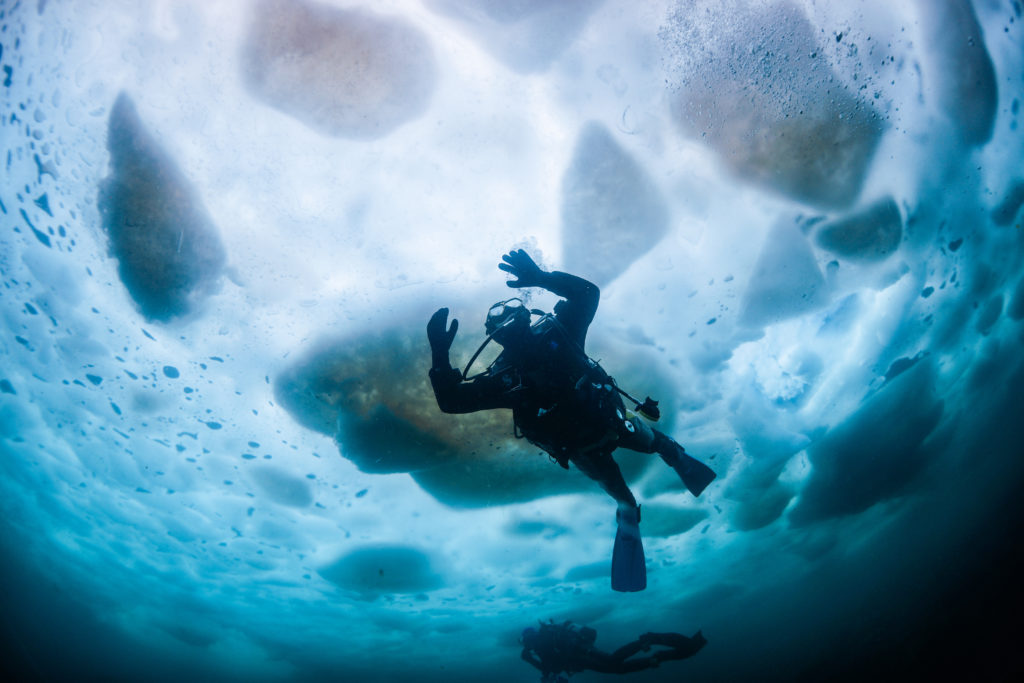Choosing your first regulator is almost as much fun as choosing your first car (in our opinion). But with the plethora of options out there — DIN or yoke, balanced or unbalanced, black or color, your instructor’s recommendation, etc. — how do you know what’s right for you?
Your regulator is one of the most important investments you’ll make. You’ll rely on it for life support, and any problems/failures with your regulator are obviously more immediately concerning. Poorly maintained rental regulators tend to leak more, which depletes your air supply and can raise anxiety. They’re generally harder to breathe from as well, and may not be the most hygienic.
In short, if I could travel with only two pieces of dive equipment, I’d choose my regulator and dive computer. Drawing on my 20 years as a dive professional, as well as advice from colleagues, we’ve put together a few tips when it comes to choosing your first regulator.

DIN or yoke
Depending on where you’re purchasing and whether you ask, you may not have a choice. In North America, most retailers will offer yoke/A-clamp by default. In Europe or the U.K., you’ll most likely have the option to purchase a DIN. For more on the difference between a yoke and DIN configuration, check here. If you intend to do lots of deep or technical dives, or ones in overhead environments, we recommend DIN regulators. This connection tends to be stronger and is preferred for that type of diving. You can easily convert DIN regulators to yoke/A-clamp configurations with an adaptor (usually an additional purchase). You can also remove a donut fitting from the valve face. That said, most first-time regulator purchases, at least in the U.S. and tropics, will be yoke-style. You can convert these to DIN as well.
Budget or premium (often known as unbalanced or balanced)
While price shouldn’t be the only deciding factor on such a crucial piece of equipment, economics of course play a part in the decision-making process. Unbalanced regulators are at the lower end of the price spectrum. With both piston and diaphragm designs, these typically breathe a little harder as the tank pressure drops, when you’re breathing at deeper depths, or when two divers breathe at the same time. Balanced regulators tend to breathe evenly across the dive, both at depth and when your tank pressure drops. If money is no object, many are available in titanium or colored finishes. If you regularly dive at deeper depths, beyond 80 feet (24 m) or in challenging conditions, such as cold water or strong currents, then a balanced reg is the way to go.
Ease of service/parts
Frequent divers may want to choose a well-known brand such as Scubapro or Aqua Lung. These will be easier to find service or parts for those in remote locations. Your choice when it comes to unbalanced vs. balanced may also depend on how much you travel. On small islands and in remote locations you can usually get parts and service for an unbalanced regulator.

Environmentally sealed
If you’ll be diving in cold water, an environmentally sealed regulator prevents potential freezing, which could result in a free-flow. In Europe, regulations require an environmentally sealed regulator for diving in waters as cold as 35 to 39 F (2 to 4 C). A sealed regulator also prevents debris build-up if you’re diving in waters that are high in silt, sand or other particulates. This type of regulator does tend to be more expensive. If you cannot afford this feature when you buy it, you may be able to adapt or upgrade the regulator at a later date.
Additional features to consider
Venturi/inhalation assist: These valves make breathing from the second-stage diaphragm easier at depth and, when in the “off” setting, help avoid free-flows at the surface.
Miflex/length of hoses: While you can change hoses, they should configured in such a way that they’re comfortable for each diver to breathe from. If you’re using an alternate rather than an Air2 setup, it should be on a slightly longer hose (6 to 8 inches). Miflex hoses are popular with some divers due to their flexibility and versatility. If you pack your regulator in your carry-on luggage when flying, these hoses also make it easier to stow.
Number of ports: Ideally, you’ll have two high-pressure ports. This way you’ve got the option to add an air-integrated transmitter, as well as your submersible pressure gauge. The first stage should also have four low-pressure ports so that you can connect your primary air source, alternate air source, a low-pressure BCD inflator and a drysuit inflator hose.
Weight: As airlines get stricter and stricter on travel allowances, every bit of extra weight makes a difference. Many manufacturers have taken this into account and have made lighter or smaller first stages. Do ensure that this doesn’t affect performance or limit the features listed above. Bringing your regulator in your carry-on baggage will protect it and reduce your checked-baggage weight.

